By: debbie lynn elias
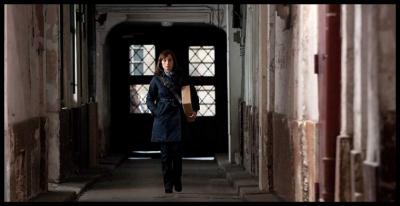
When a book is on the Best Seller List for 120 weeks (after initially being rejected by publishers for years) and then gets adapted as a film, one should sit up and take notice. When the story involves a fresh and different point of view and a very sorrowful and moving subject, the Holocaust, one should sit up and take notice. When the film stars Kristin Scott Thomas, one MUST get to the theater as quickly as possible. Such is the case with SARAH’S KEY. With a book written by best-selling author, Tatiana de Rosnay, and adapted and directed for the screen by Gilles Paquet-Brenner, SARAH’S KEY is a visually and emotionally powerful film that eloquently spans the decades, transfixing one to the fictional story of American journalist Julia Jarmond and her quest to uncover the truth about a little girl named Sarah and the events that transpired in the 1942 Vel’ d’Hiv Roundup in France. Artfully intertwining Julia’s life with Sarah’s story, past and present collide with electrifying, heart-pounding emotion.
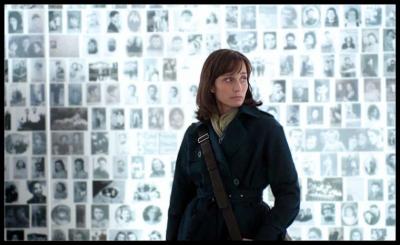
Julia Jarmond is a respected American al journalist who has made a life for herself in Paris as a writer for a high profile magazine. With the 60th anniversary of the Vel’ d’Hiv Roundup approaching, she is assigned to cover the event and its history. [The facts of Vel d’Hiv are factually presented in the film.] The time was July 16, 1942 in Occupied France. Not the Nazis, but the French Police, performed their own “cleansing” raid in the heart of Paris, and rounded up all the Jewish citizens in the City, herding them like cattle to the great Velodrome d’Hiver. Mothers, fathers, aunts, uncles, brothers, sisters, grandparents and children – no one was exempt. For days, they were held like prisoners in the Velodrome. No food. No water. No toilet facilities. Perhaps the best visual of the situation is to analogize it to New Orleans during Hurricane Katrina. But unlike the victims of Katrina, for these people help would never come. They were all shipped off to Nazi concentration camps where, as history has shown us, their fates were all but sealed. Husbands separated from wives. Children separated from their mothers. Many never came back. Few survived. And for still others, it was as if they disappeared from the world. For Julia Jarmond, one of those that seemingly disappeared without a trace was Sarah Starzynsky…and her story began in the childhood home of Julia’s husband.
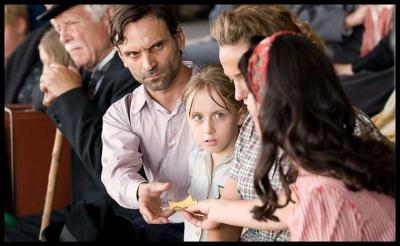
Bertrand Tezac is a less than loving sympathetic husband. A cold business oriented architect through and through, although he provides a good life for his wife Julia and their 11 year old daughter, work is his life and family is second. Since 1942 his family has owned an apartment in the Marais district of Paris and now, having been vacant for a number of years, he has decided to renovate the apartment and make it their new home.
While Bertrand is involved with the renovation and other business matters, Julia delves ever deeper into researching her story on Vel’ d’Hiv. Part of that research reveals that Bertrand’s family took over their now apartment in July 1942 after the family residing there was taken away to Vel’ d’Hiv. With this personal connection to her story, Julia digs deeper, determined to learn what has become of the family that was taken away. To Julia, this is their home and it should be returned to any heirs; if she can find any.
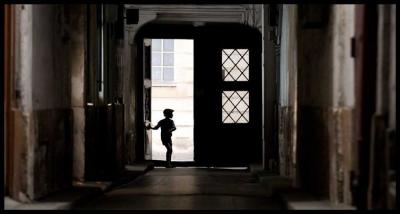
Turning to 1942, we meet Sarah and her family. On that fateful day in July, she fears for her 4 year old brother Michel and in an effort to protect him, hides him in a secret closet behind the wall in their bedroom. Assured by her mother they will return home soon, Sarah locks Michel in the closet, taking the key with her. But on being locked in the Velodrome herself, Sarah realizes that she will not be returning home and tells her parents about Michel. Frantic, Sarah is desperate to save her little brother but her pleas fall on deaf ears. Making matters worse, she is separated from her parents and shipped by train to a camp out in the country. Still determined to save Michel, Sarah plans a desperate escape.
Segueing between the past and present, as Julia digs for every bit of information she can find on Sarah and her family, we see Sarah’s parallel life unfold. With the clock ticking for each, history soon collides with emotional fury.
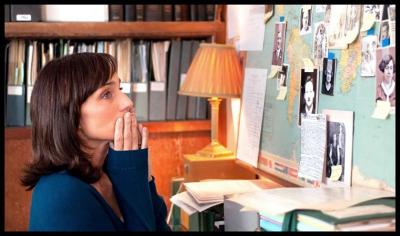
Is there nothing that Kristin Scott Thomas can’t do? As Julia, she runs the gamut from girlish and coquettish to strong and independent to touching and unsure. Filled with conviction of heart and soul, Scott-Thomas is mesmerizing in her most absorbing performance since “I’ve Loved You So Long.” Harnessing restraint like an emotional volcano ready to erupt, Scott-Thomas knows the exact climactic moment to let herself go, drawing a willing audience deeper into the heart and pain of Julia. Outstanding.
But the real joy of SARAH’S KEY is Sarah herself – Melusine Mayance. Mesmerizing. Magical. Mayance transports you to 1942 Paris. She has the most soulful eyes and expressiveness. Her performance is heartbreakingly real to the point of giving one goosebumps just watching her. If there is a dark horse in this year’s Oscar race, it’s Melusine Mayance.
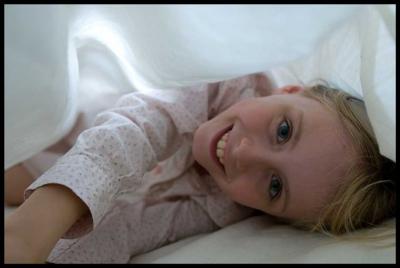
And the supporting cast is equally impressive, starting with Aidan Quinn as William Rainsferd, an American heir of Sarah Strazynski. As the subplot of Rainsferd develops, Quinn just stuns with his soft-spoken emotional range, not to mention those blue blue eyes. And his chemistry with Scott-Thomas is undeniable. Notable is also Niels Arestrup who plays an elderly French farmer named Jules Defaure. Instrumental in Sarah’s story, Arestrup, together with Dominique Frot as Jules’ wife Genevieve, add a new layer of emotional complexity and warmth. Particularly stirring is Michel Duchaussoy as Julia’s father-in-law, Edourd Tezac. Forceful as the family patriarch, Duchaussoy pulls no punches and bares his soul in one highly emotional pivotal scene.

Written and directed by Gilles Paquet-Brenner, I have to say that SARAH’S KEY is one of the most faithful book to screen adaptations I have seen. Never once does he compromise the emotional integrity of the novel nor does he rely on cheap melodrama to elicit emotion on film. Although there are a few modifications from the novel (most notably, the ending), “It was not that difficult an adaptation because it’s a very well plotted book. Adaptations are very difficult when you like the atmosphere, you like the characters, but you have no plot.” With SARAH’S KEY, ” you keep the plot, all the rich tones that the book has, good characters and good structure. Good structure was the real challenge with the book because dealing with two periods of times can be confusing for the audience, so the challenge was to keep that very fluid so that the audience knows in a second what period of time there were in. That’s something we worked very hard on writing the screenplay. Working on the transitions, so that we can find that balance.”
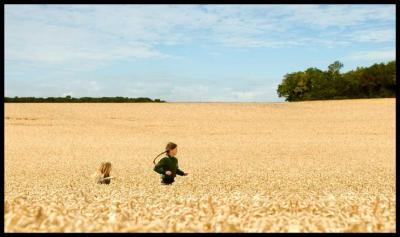
Aiding in the time transitions are the distinct visual palettes created by Paquet-Brenner and his cinematographer Pascal Rideo. Looking at the past, the pair created a warmer, more sepia-toned visual, while for the present and Julia’s world, a brighter, clear, sharper look. “You have the cinematography but you also have to have the right shots. For 1942, it’s hand-held [camera] and short lenses; short lenses are important because I wanted 1942 to be very personal so that people could basically experience the time.” Paquet-Brenner accomplished this goal beautifully as one feels as if they are right in the Velodrome with Sarah. “I was obsessed with that.” You can almost feel the swelter, feel the beads of sweat flopping off of people, smell the stench or urine and feces and unclean bodies. A very powerful sensory experience is achieved. For Julia’s world, Paquet-Brenner drew inspiration from the lensing in “Klute.” Calling for “very classical filmmaking. Not too many shots. The only thing I wanted to underline with Julia…to see her alone. I wanted to insist on her loneliness in her quest.” Very important to Julia’s character, this quest that she is on is such a solitary journey. She may have her co-workers along for the story, but even they are not that taken with the story or the story of Sarah.

Paquet-Brenner truly captures the solitude and loneliness of both Julia and Sarah. Their respective emotional isolation is beautifully paralleled and presented. “I’m very happy that you mention that because very very few people notice and respond to that. I always felt that there was a way that we could reach a connection between the two of them.” Aiding in this emotional palette is the smoother, seamless editing of Herve Schneid. Also noteworthy are the camera angles themselves which, in 1942, retain the point of view and angular perspective of an 11 year old. “It’s through Sarah’s eyes that we see all this.” Adding to the historical gravitas, SARAH’S KEY is the first film to lens at the Holocaust Memorial in Paris.
Francoise Dupertui’s production design is superb as he constructs two distinct worlds, each as believable and immersive as the next.
Enhancing the visual and emotional complexities of SARAH’S KEY is an exquisitely rich score by Max Richter. So definitive as to each of the characters and pivotal scenes, the music carries one along the journey, lifting the spirit and filling it with life and hope.
Unlock a magical movie experience this weekend with SARAH’S KEY.
Julia Jarmond – Kristin Scott Thomas
Sarah Starzynski – Melusine Mayance
Written and Directed by Gilles Paquet-Brenner. Adapted on the novel of the same name by Tatiana de Rosnay.












